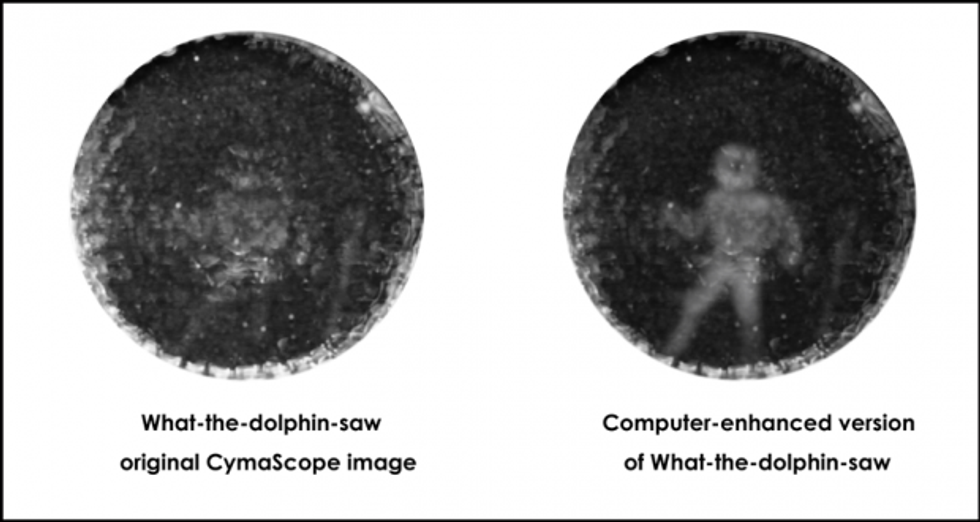
© 2025 Blaze Media LLC. All rights reserved.
Extraordinary Image Showing Dolphin's Echolocated Impression of Submerged Human Leaves Researchers 'Speechless
December 08, 2015
"Nearly every experiment is bringing us more images with more detail."
For the first time ever, researchers from the U.S. and the U.K. have engineered an impression of what a dolphin sees through echolocation, and it left them speechless.
Using an imaging system called Cymascope, Jack Kassewitz of SpeakDolphin, a dolphin communication research organization, and his team were able to isolate and record dolphin echolocation sounds directed onto specific objects. Kassewitz's latest research showed the dolphin's echolocated impression of a submerged human.

"Seeing the 3D print of a human being left us all speechless," Kassewitz told Gizmodo. "For the first time ever, we may be holding in our hands a glimpse into what cetaceans see with sound. Nearly every experiment is bringing us more images with more detail."
In order to create the actual image, the Cymascope technology takes the sounds from the dolphin's internal echolocation system and converts them into 2D images. From there, researchers are able to convert those images to 3D, and create 3D-print, real-world models.
"When we discovered that dolphins not exposed to the echolocation experiment could identify objects from recorded dolphin sounds with 92% accuracy, we began to look for a way for to see what was in those sounds," said Kassewitz, who has been researching dolphin communication for more than a decade.
To conduct the experiment that created the impression of the submerged human, Kassewitz and his team worked with a female dolphin named Amaya. They directed her sonar beams toward a submerged diver, while a hydrophone recorded the dolphin's echoes.
In order to avoid any "noise," the diver went into the water without any breathing apparatus, because the researchers did not want air bubbles to affect the results of the experiment.
The team also performed the experiment with a flowerpot, a cube and a plastic "+" symbol. According to Kassewitz, the researchers were "thrilled" with the impression Amaya made of the cube, but that was before they were left "speechless" by her impression of the diver.
Moving forward, Kassewitz and his team are interested in determining if and how dolphins might be sharing echolocated impressions as part of an intra-species pictorial language.
(H/T: Gizmodo)
—
Follow Tré Goins-Phillips (@tregp) on Twitter
Want to leave a tip?
We answer to you. Help keep our content free of advertisers and big tech censorship by leaving a tip today.
Want to join the conversation?
Already a subscriber?
more stories
Sign up for the Blaze newsletter
By signing up, you agree to our Privacy Policy and Terms of Use, and agree to receive content that may sometimes include advertisements. You may opt out at any time.
Related Content
© 2025 Blaze Media LLC. All rights reserved.
Get the stories that matter most delivered directly to your inbox.
By signing up, you agree to our Privacy Policy and Terms of Use, and agree to receive content that may sometimes include advertisements. You may opt out at any time.






